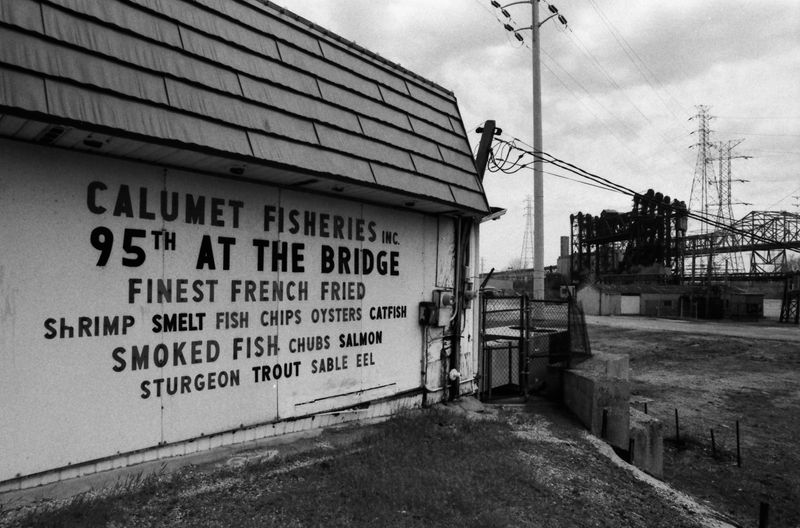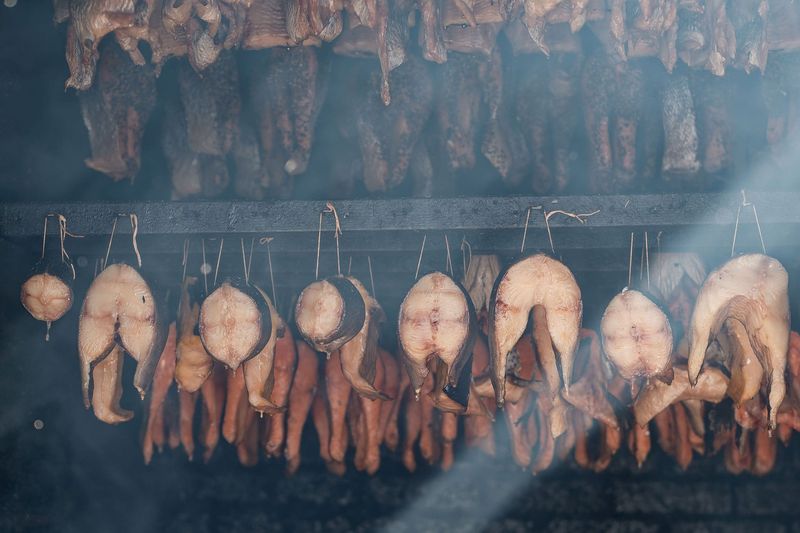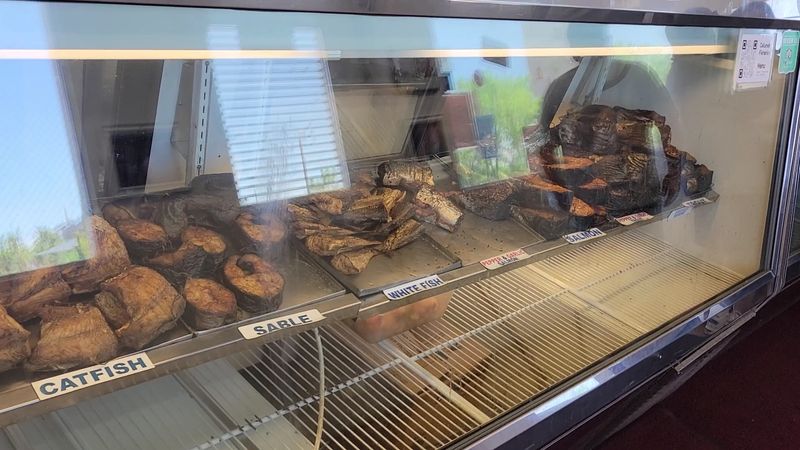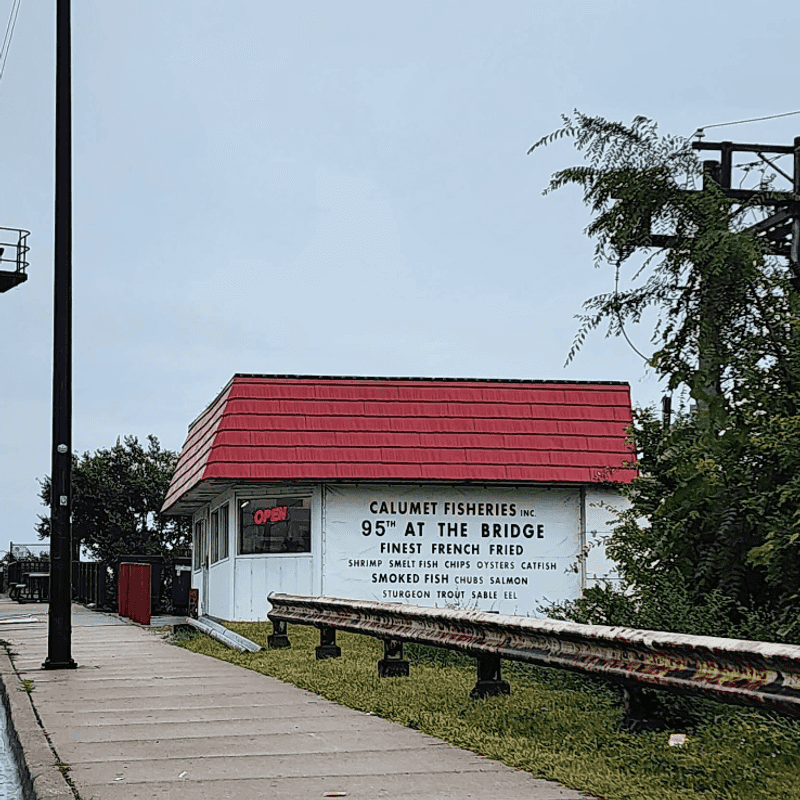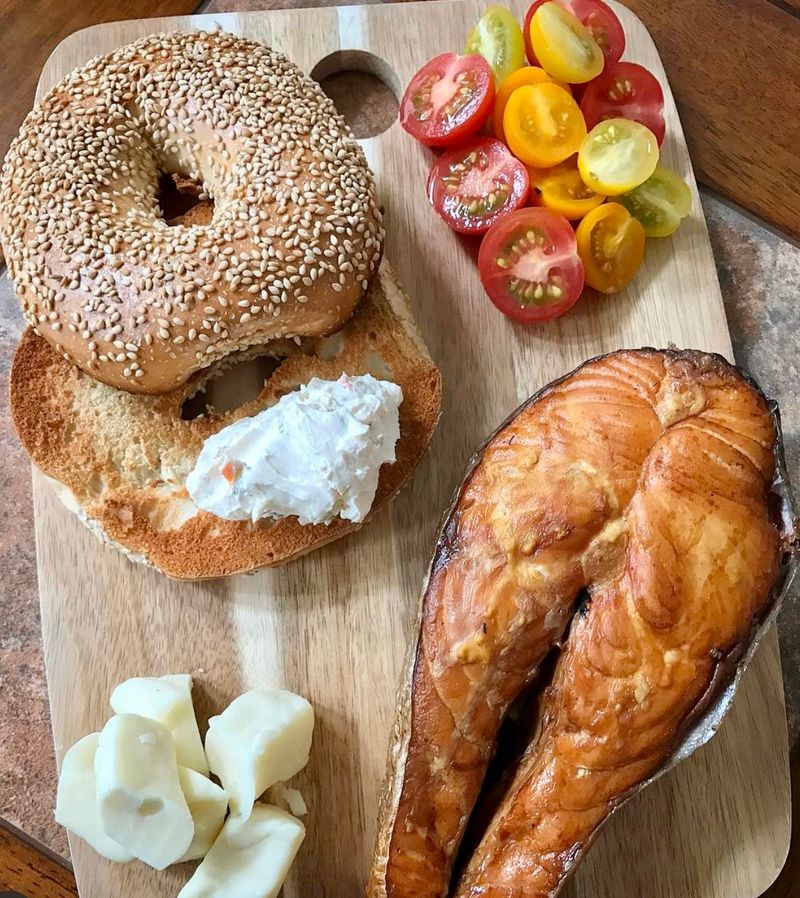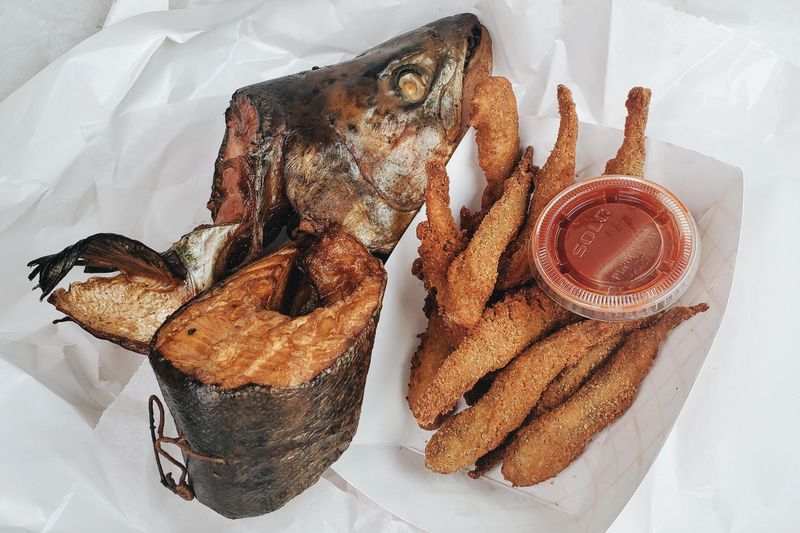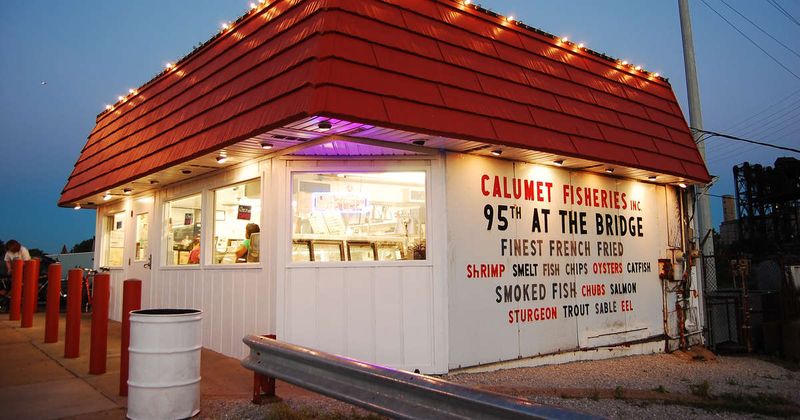Follow the curl of oak smoke to a humble shack beneath a steel bridge, where Chicago’s last wood-fired fish house keeps an endangered craft alive. Calumet Fisheries is not about frills; it’s about time, patience, and smoke seeping deep into fish like a memory. Here, the South Side’s industrial bones frame a meal that tastes like history and river wind. If you’re hungry for authenticity—and the rarest kind of flavor—this is the pilgrimage you’ve been looking for.
A Working Smokehouse on Chicago’s South Side
At 3259 E. 95th Street, just beneath the 95th Street Bridge, Calumet Fisheries exhales oak smoke into Chicago’s South Side air. Established in 1928 and family-run since 1948, the shack stands feet from the Calumet River, a stubborn survivor of working-waterfront culture. Inside the attached smokehouse, oak logs feed tradition, curing salmon, trout, and shrimp the slow way. The setting is humble—often no indoor seating—so people eat in cars or at picnic tables. You come for the aroma and stay for the lineage, a place where technique, neighborhood grit, and continuity converge. It’s a rare refuge of craft amid the city’s changing skyline, an address where smoke writes history on fish—and memory on you.
Smoke, Fry, and the Menu’s Split Personality
The menu divides cleanly: smoke and fry, legacy and comfort. Smoked offerings—salmon steaks, trout, black cod (sablefish), shrimp, sometimes eel—are brined overnight and slow-smoked over oak for hours, yielding velvety texture and profound depth. On the fry side, it’s classic Chicago seafood: shrimp, catfish, smelt, and hearty platters meant for tailgates and car hoods. No white tablecloths, just paper bags, wax paper, and that mild sauce. The ritual is simple: pick a smoke, add a fry, grab napkins, and claim a curb. Every bite delivers grainy oak perfume and briny sweetness. It’s food that doesn’t apologize—honest, rugged, and rooted in repetition rather than reinvention.
Oak Logs and the Art of Time
Natural oak logs are the engine, patience the gearbox. Fish are brined to season and firm, then hung or racked in a smokehouse where the fire never rushes. Temperature and airflow are coaxed, not commanded, by an experienced hand. Over hours, smoke laces the flesh, turning salmon jewel-like and shrimp gently bronzed. This is pre-digital, pre-button tradition, where wood choice matters and weather whispers through every batch. The result is nuanced: not acrid, not sugary—just rounded, savory smoke with river-worn restraint. In a city sprinting forward, Calumet moves at oak’s tempo, proving time remains the indispensable ingredient.
A Family Legacy Since 1948
Founded in 1928 and purchased in 1948 by Sid Kotlick and Len Toll, Calumet Fisheries has stayed in the same family line, with recipes and routines passed like heirlooms. That continuity shows in the minimal menu drift and the steadfast smokehouse methods—evolution by touch rather than trend. Family stewardship here is practical: sourcing, brining, wood, timing, service cadence. It’s also cultural, anchoring a neighborhood narrative that spans steel booms and busts. When you order, you taste the accumulated choices of generations, tuned by river weather and customer feedback. It’s a legacy not framed on a wall, but embedded in muscle memory and oak-stained racks.
Industrial River, Cultural Memory
Calumet’s setting is a living diorama of Chicago’s working past: steel mills, barge traffic, drawbridges, and those weathered river edges. Eating here places you inside that story, not beside it. The nearby 95th Street Bridge, immortalized in The Blues Brothers, adds pop-cultural patina to the industrial atmosphere. This fish shack doesn’t romanticize decay; it normalizes labor, routine, and smoke. In a city famous for skyline gloss, the South Side’s utilitarian beauty whispers from corrugated metal and water-stained piers. Your meal becomes a small act of participation—edible heritage, carried forward one paper bag at a time.
Awards, Accolades, and America’s Classics
In 2010, Calumet Fisheries earned the James Beard Foundation’s America’s Classics honor, an award reserved for regional institutions that define their community’s flavor. The accolade recognized what locals knew: this is not nostalgia cosplay, but ongoing, everyday excellence. Media features and food pilgrimages followed, yet the place stayed stubbornly itself—cash-forward, smoke-first, no fuss. The award didn’t transform the shack; it validated the craft inside. That’s the real distinction: recognition without reinvention. The smokehouse door still creaks, the oak still snaps, and the fish still emerges with that unmistakable, quietly extraordinary taste.
How to Visit: Hours, Lines, and Cash
Plot your visit like a pro. Check current hours, go earlier for smoked items (they can sell out), and budget time for a line. Bring cash—policies can shift, but a cash-only mindset prevents disappointment. With minimal indoor seating, your car, the curb, or a picnic table becomes your dining room. The neighborhood is working-class and authentic; treat it with respect and curiosity. Pair your stop with a South Side drive to feel the broader context. Most importantly, follow your nose: if the wind blows smoke toward the bridge, you’re steps from the good stuff.
What to Order: Smoked, Fried, and Mild Sauce
Start with a smoked salmon or trout steak—dense, rosy, and perfumed. Add smoked shrimp if available; their snap holds up to oak’s embrace. Then go classic: fried shrimp or smelt, crisp and salt-forward, dipped in the house mild sauce that threads sweetness and heat. Veterans bring saltines to pair with smoked fish, creating a perfect textural counterpoint. Balance rich bites with lemon and pickles. It’s a spread built for sharing on a trunk lid, each element reinforcing the others. If eel or sablefish appears, don’t hesitate—rarities reward the adventurous palate.
Photographing Smoke and Steel
Arrive during golden hour for warm light on the bridge’s ironwork and soft smoke plumes. Capture context first—river, trusses, shack—then move to details: oak stacks, the smokehouse door, and the bronzed sheen of fish flesh. For food shots, use diffused natural light and keep props honest: paper, saltines, sauce cups. A shallow depth of field flatters texture without glamorizing grit. If photographing people, ask politely—this is a working spot, not a set. The goal is documentary truth: industrial bones, humble ritual, and smoke as the visual protagonist.
Why It’s Worth the Pilgrimage
A visit to Calumet Fisheries is a lesson in restraint: a tiny building, a short menu, and a single elemental tool—smoke. In return, you get flavor that feels inevitable, like river water and steel girders. The experience is profoundly local, revealing a Chicago beyond marquee attractions. You’ll carry the oak’s perfume on your clothes and the taste memory for days. More than a meal, it’s continuity you can hold, proof that endurance still seasons the city’s table. Come hungry, patient, and ready to stand in the wind.

